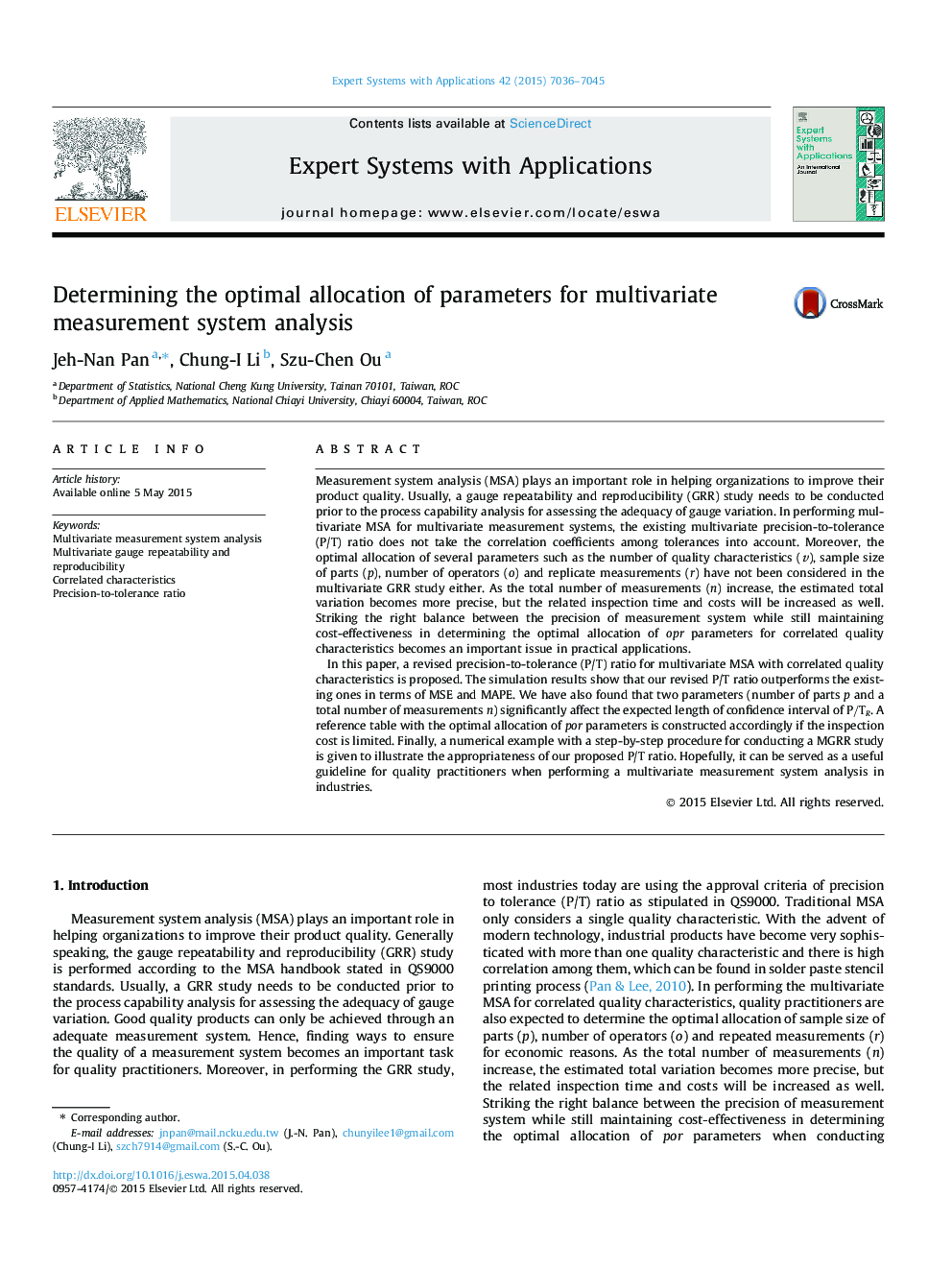| Article ID | Journal | Published Year | Pages | File Type |
|---|---|---|---|---|
| 382071 | Expert Systems with Applications | 2015 | 10 Pages |
•We provide a guideline for optimal allocation of parameters in multivariate MSA.•We propose a revised P/T ratio for multivariate MSA with correlated characteristics.•The revised P/T ratio outperforms the existing ones in terms of MSE and MAPE.•A table with optimal allocation of parameters is provided for conducting MGRR.
Measurement system analysis (MSA) plays an important role in helping organizations to improve their product quality. Usually, a gauge repeatability and reproducibility (GRR) study needs to be conducted prior to the process capability analysis for assessing the adequacy of gauge variation. In performing multivariate MSA for multivariate measurement systems, the existing multivariate precision-to-tolerance (P/T) ratio does not take the correlation coefficients among tolerances into account. Moreover, the optimal allocation of several parameters such as the number of quality characteristics (vv), sample size of parts (pp), number of operators (oo) and replicate measurements (rr) have not been considered in the multivariate GRR study either. As the total number of measurements (n) increase, the estimated total variation becomes more precise, but the related inspection time and costs will be increased as well. Striking the right balance between the precision of measurement system while still maintaining cost-effectiveness in determining the optimal allocation of opr parameters for correlated quality characteristics becomes an important issue in practical applications.In this paper, a revised precision-to-tolerance (P/T) ratio for multivariate MSA with correlated quality characteristics is proposed. The simulation results show that our revised P/T ratio outperforms the existing ones in terms of MSE and MAPE. We have also found that two parameters (number of parts pp and a total number of measurements nn) significantly affect the expected length of confidence interval of P/TRP/TR. A reference table with the optimal allocation of por parameters is constructed accordingly if the inspection cost is limited. Finally, a numerical example with a step-by-step procedure for conducting a MGRR study is given to illustrate the appropriateness of our proposed P/T ratio. Hopefully, it can be served as a useful guideline for quality practitioners when performing a multivariate measurement system analysis in industries.
